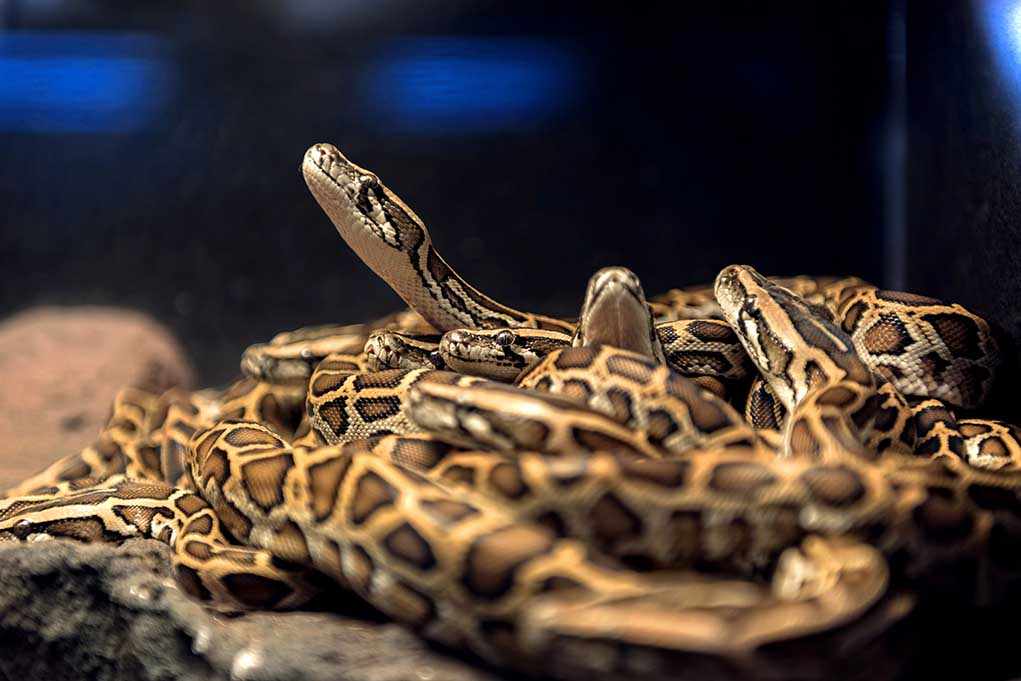
Florida’s deployment of solar-powered robot rabbits to fight invasive pythons in the Everglades signals a high-tech turning point in the battle to protect America’s wildlife and restore order after years of failed government intervention.
Story Snapshot
- Florida agencies are using AI-driven robotic rabbit decoys to lure and capture invasive Burmese pythons in the Everglades.
- This marks the first large-scale use of such technology for invasive snake management in the United States.
- The program aims to restore ecological balance after decades of wildlife decline linked to python predation.
- Early results point to greater python detection and removal rates, with potential for national impact on conservation approaches.
Innovative Technology Targets a Decades-Old Ecological Crisis
In August 2025, South Florida wildlife managers and University of Florida scientists launched a fleet of solar-powered robotic rabbits, designed to mimic the heat, scent, and subtle movements of real marsh rabbits. These decoys are strategically placed throughout the Everglades, where AI cameras and sensors monitor for python activity and instantly alert trained removal teams. The move comes as a direct response to the catastrophic decline of native mammals—such as marsh rabbits and raccoons—caused by invasive Burmese pythons, a problem that ballooned after decades of ineffective government solutions and bureaucratic delays.
The Everglades’ ecological balance has been under siege for over fifty years, with Burmese pythons first detected in the 1970s after likely escaping or being released by pet owners. Multiple taxpayer-funded programs, including live prey trials, detection dogs, and high-profile hunting competitions, failed to curb the pythons’ exponential spread. This persistent threat not only devastated local wildlife populations but also placed additional burdens on local communities, tourism industries, and the broader American ecosystem. The new robot rabbit effort represents a break from past leftist approaches that often emphasized expensive, slow-moving bureaucratic fixes over technological innovation and active intervention.
Key Stakeholders and Their Roles in the New Strategy
The South Florida Water Management District leads the deployment, collaborating closely with University of Florida researchers who developed the mechanical rabbits and advanced AI detection systems. Removal contractors receive real-time alerts and respond rapidly, increasing both the efficiency and humane nature of python captures. The National Park Service and Florida Fish and Wildlife Conservation Commission provide regulatory support, but the real strategic decisions now rest with state agencies and scientific experts, not distant federal bureaucrats. This direct, results-driven partnership stands in sharp contrast to years of federal overreach and mismanagement that allowed the crisis to spiral.
Primary motivations center on restoring native wildlife and preserving the Everglades’ unique habitat. Financial incentives help drive swift action among contractors, while academic partners focus on refining the technology for scalability and effectiveness. Unlike previous conservation efforts hampered by government red tape, this approach leverages both public and private expertise and puts practical results ahead of ideological agendas.
Current Developments: Early Success and Program Expansion
Within weeks of public deployment in July and August 2025, early reports confirm that the robotic decoys are “working better than expected,” with python detection and removal rates outpacing prior methods. Upgrades now include scent diffusers to emit authentic rabbit smells—improving the decoys’ realism—and AI systems that can distinguish pythons from native snakes, limiting the risk of collateral damage to protected species. Field teams have expanded operations, with additional units and improved AI detection rolling out across high-risk Everglades zones. This rapid scaling and willingness to adapt technology demonstrates the benefits of local control and accountability, as opposed to the rigid, one-size-fits-all mandates that characterized prior wildlife management efforts.
Officials and researchers alike emphasize the program’s humane and scalable nature. Mike Kirkland of SFWMD cited early success with live rabbit trials, which led to the mechanical decoy’s development. University of Florida experts highlight the importance of real-time data and advanced detection for effective capture operations. These developments reflect a renewed commitment to results, efficiency, and common-sense environmental stewardship.
Broader Impacts: Restoring Order and Inspiring Innovation
Short-term, the robot rabbits are increasing python removals and reducing predation pressure on native species—key steps in restoring the Everglades’ natural balance and supporting local economies dependent on a healthy ecosystem. Long-term, this effort could dramatically slow python population growth and serve as a model for tech-driven wildlife management nationwide. The project’s success strengthens public-private partnerships and demonstrates the power of American ingenuity when freed from excessive federal interference and ideological distractions.
https://twitter.com/fox13news/status/1722148504839710832
While some conservation experts caution that technology alone cannot solve the entire python crisis, consensus holds that the robotic rabbits are a valuable addition to a broader strategy. This program’s rapid rollout, transparency, and focus on measurable results reflect a new era where local leadership and practical innovation finally take priority over failed federal overreach—a welcome shift for those frustrated by years of government inaction and misplaced priorities.
Sources:
Robot rabbits are being used in the war on this major threat to Florida
Florida deploys robot rabbits to lure invasive Burmese pythons in the Everglades
Robot rabbits removing pythons from Everglades
DYK: Using robotic rabbits to remove invasive pythons
Dr. Chris Dutton and his robo-bunnies tackle the Burmese python problem in the Everglades











